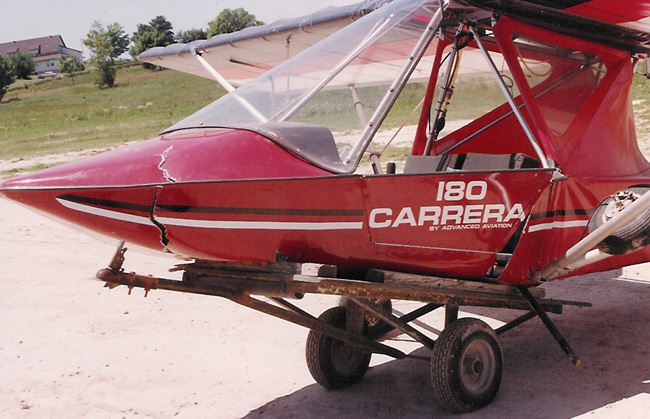|
The first is:
A preflight ground check off list.
Which should include YOU.
Click here
for more information.
Your engine.
Click
here for more information:
Your plane.
Click here for more information:
The second is a preflight cockpit check list.
The third is a post flight check list.
If you donít have these three check-off lists, your asking for a
possible problem. If you say you have them memorized all in your head,
youíre asking for a possible problem. If you do have some of these
check off lists, and you do check them MOST of the time, you are
asking for a problem. And if you just jump into your plane, turn on the
gas, start her up and go, I can almost guarantee that you will soon have a
problem.
A few years ago, a good friend of mine, jumped into his plane, which he
had just landed a short time before, fired up his engine, taxied out to
the runway, opened the throttle and took off. About 100 feet in the air
near the end of the runway, his engine stopped! He dropped the nose, flew
straight ahead, came in too steep and wiped out the nose, landing gear and
some of the cabin area. Fortunately he was not injured! He forgot one of
the most important checks to make, he didnít check to make sure his fuel
valve was turned on. He had turned it off when he had previously landed.
Having a check off list, and taking the time to use it, would have avoided
this near catastrophe.
Another thing many people donít do is to keep a close eye on how much
gas they have and in which tanks. For instance, you are on a wing tank,
say itís the left wing tank, and the fuel line takes a suction from the
inboard end of the tank. You are in a left turn in the pattern and
suddenly your engine dies because your in a steep left turn and the fuel
line to the left tank starts sucking air! Unless you, without thinking,
instantly switch to an alternate tank, hit choke or prime to immediately
get gas to that engine, you are in real big trouble.
Another example similar to the wing tank problem is if you are low on
fuel and the suction is taken from the front of the gas tank. You take off
in the normal attitude then go into a steep climb out, your engine stops
for the same reason as the wing tank problem. There was a similar problem
that happened at Brown field last month, fuel starvation during a steep
angle of climb out. The pilot was able to get his nose down instantly and
make a safe landing on the remaining runway. The pilot later reported that
the fuel was low in that tank and the fuel pump started sucking air. The
pilot was lucky. Think of the possibilities of what could have happened
depending on his altitude and the distance from the runway.
These are just a few of the things that can happen when you donít use
check off lists. There are many more, such as forgetting to run your engine
up and checking your mags. How about your seat belt and shoulder straps?
You donít think it can happen? Donít you believe it? It happened to me
once! Play it smart, use check off lists!
|


